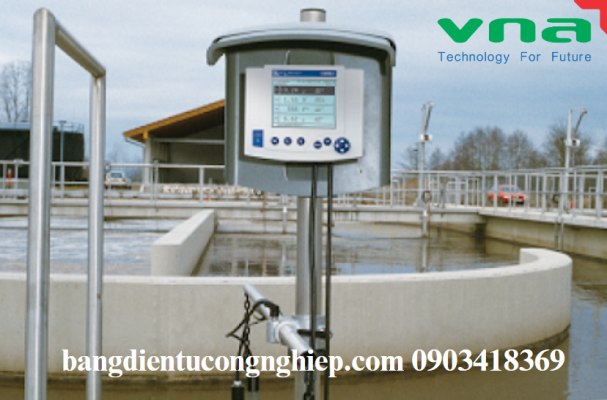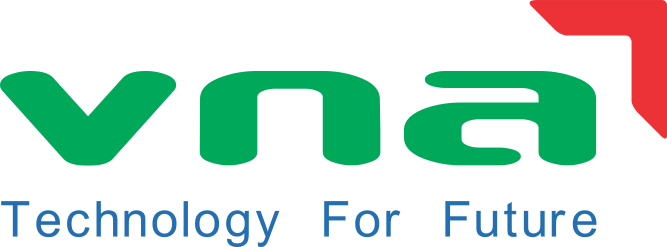Sửa chữa màn hình Led
Wastewater monitoring screen – Convenient wastewater treatment solution
The automatic wastewater monitoring system is an important tool in monitoring and managing wastewater quality. It allows to remotely record, monitor and transmit data on water environment parameters such as pH. Temperature, TSS, COD, Ammonia, TOC, Total N, Total P, flow,… To ensure wastewater is treated properly. properly treated before releasing into the environment. Wastewater monitoring screen The purpose is to monitor the flow and measure wastewater quality through indicators measured at installation points. Let’s find out more details with Vnatech in the article below !
Benefits of using Wastewater monitoring screen
Early Detection of Emerging Threats:
- Wastewater monitoring can detect the presence of various substances, including pathogens, pharmaceuticals, and illicit drugs, before they manifest in the general population.
- This early detection allows for proactive public health interventions and informed decision-making by authorities.
- Wastewater data can provide valuable insights into the prevalence of diseases, substance use, and other public health indicators within a community.
- This information can be used to guide targeted public health strategies and resource allocation.
Wastewater monitoring screen- Outbreak Monitoring and Response:
- Wastewater monitoring can help detect the early signs of disease outbreaks, enabling public health officials to respond more quickly and effectively.
- This can lead to the implementation of appropriate containment measures and the deployment of resources to mitigate the spread of diseases.
- Wastewater monitoring can be used to track the presence and concentrations of various pollutants, heavy metals, and other contaminants.
- This data can help ensure compliance with environmental regulations and guide efforts to improve wastewater treatment and environmental sustainability.

Wastewater monitoring screen- Outbreak Monitoring and Response:
Cost-Effective Surveillance:
- Wastewater monitoring is generally more cost-effective than traditional population-based sampling and testing methods, as it can provide insights into the health and behaviors of an entire community through a single sampling point.
- The data gathered from wastewater monitoring can inform policy decisions, resource allocation, and the development of targeted public health and environmental strategies.
- This can lead to more effective and evidence-based approaches to addressing public health and environmental challenges.
- Wastewater monitoring has the potential to contribute to improved public health outcomes, reduced substance abuse, and better environmental protection, ultimately benefiting the overall well-being of a community.
Implementing a robust wastewater monitoring system requires collaboration between various stakeholders, including public health authorities, water utilities, and research institutions. By leveraging the benefits of wastewater monitoring, communities can enhance their ability to detect, respond to, and mitigate emerging threats, while also gaining valuable insights into the health and well-being of their population.
When using Wastewater monitoring screen, businesses should note the following
Regulatory Compliance:
- Ensure that the wastewater monitoring system and its operation comply with all relevant local, regional, and national regulations, such as those related to water quality standards, environmental protection, and data privacy.
- Stay informed about any changes in regulations that may impact the monitoring requirements or reporting obligations.
- Regularly review and optimize the wastewater monitoring system to incorporate technological advances, address emerging needs, and improve the overall effectiveness of the program.
- Encourage employee training and capacity building to ensure the continuous enhancement of in-house expertise and operational efficiency.
Wastewater monitoring screen- Sampling Protocols and Accuracy:
- Establish robust sampling protocols to ensure the collected wastewater samples are representative and accurate, reflecting the true composition of the wastewater.
- Implement quality control measures, such as regular calibration and maintenance of the monitoring equipment, to maintain data integrity.
- Develop a comprehensive data management system to store, analyze, and interpret the wastewater monitoring data.
- Ensure timely and accurate reporting of the data to relevant authorities and stakeholders, as required by regulations.
- Consider the use of data visualization tools to effectively communicate the insights derived from the monitoring data.
Confidentiality and Data Privacy:
- Implement robust data security measures to protect the confidentiality of any sensitive information that may be revealed through wastewater monitoring, such as the presence of illicit substances or personal health data.
- Adhere to applicable data privacy regulations and guidelines to ensure the ethical and responsible use of the collected information.
- Establish open communication channels with local authorities, water utilities, and regulatory bodies to ensure alignment on monitoring objectives, data sharing, and response protocols.
- Participate in industry forums, workshops, and knowledge-sharing initiatives to stay informed about best practices and technological advancements in wastewater monitoring.

Cost-Benefit Considerations:
- Carefully evaluate the costs associated with implementing and maintaining the wastewater monitoring system, including the acquisition of equipment, personnel, and operational expenses.
- Weigh the potential benefits, such as improved compliance, risk mitigation, and enhanced public image, against the investments required to ensure a favorable return on investment.
How to use the Wastewater monitoring screen
Determine Monitoring Objectives:
- Clearly define the specific goals and objectives of the wastewater monitoring program, such as regulatory compliance, public health surveillance, or environmental protection.
- Identify the key parameters and analytes of interest that need to be monitored based on the defined objectives.
- Choose a wastewater monitoring system that is capable of detecting and quantifying the target parameters and analytes of interest.
- Consider factors such as accuracy, sensitivity, ease of use, and compatibility with existing infrastructure.
- Ensure the selected equipment meets any relevant regulatory or industry standards.
Establish Sampling Protocols – Wastewater monitoring screen:
- Develop standardized sampling protocols to ensure the collection of representative wastewater samples.
- Determine the sampling frequency, locations, and techniques based on the monitoring objectives and regulatory requirements.
- Implement quality control measures, such as field blanks and duplicate samples, to ensure data reliability.
- Properly install the wastewater monitoring equipment according to the manufacturer’s instructions, ensuring proper integration with the existing infrastructure.
- Conduct initial calibration and testing to ensure the system is functioning correctly and providing accurate results.
- Train personnel on the proper operation and maintenance of the monitoring equipment.
Collect and Analyze the Data – Wastewater monitoring screen:
- Regularly collect wastewater samples and analyze them using the installed monitoring system.
- Maintain detailed records of the sampling, analysis, and results, including any deviations from the established protocols.
- Employ data management and analysis tools to interpret the monitoring data and identify trends or anomalies.

Collect and Analyze the Data – Wastewater monitoring screen:
Interpret and Report the Findings:
- Interpret the monitoring data in the context of the defined objectives, regulatory requirements, and any relevant benchmarks or thresholds.
- Prepare comprehensive reports that communicate the key findings, trends, and any necessary corrective actions or response plans.
- Share the monitoring results with relevant stakeholders, such as regulatory authorities, public health officials, and the community, as appropriate.
Vnatech is always committed to providing the best and most professional service in providing and installing automatic wastewater monitoring stations, suitable for all flow rates and actual status of customers. Please contact us for detailed advice and support!
Contact Info
VIETNAM TECHNOLOGY DEVELOPMENT AND TRANSFER JOINT STOCK COMPANY.
Office: VT09-BT02 – Xa La Urban Area – Ha Dong – Hanoi.
Tax code: 01 05 158 192
Website: https://vnatech.com.vn
Email: contact@vnatech.com.vn
Hotline: 0903 418 369 / 0977 550 085
Tel: 024 668 3 261 / 098 311 7863




